The Sleep Schedules of Shadow Creatures: Circadian or Otherworldly?
Shadow creatures don’t follow typical circadian sleep patterns like humans do. Instead, their rest and activity cycles seem driven by otherworldly, dimensional, or lunar influences that challenge scientific understanding. Some reports suggest they rest during unpredictable intervals, often aligned with lunar phases or interdimensional shifts. If you want to uncover the fascinating theories behind their sleep rhythms and what might control them, there’s much more to explore beyond conventional biology.
Key TakeawaysShadow creatures often exhibit irregular, unpredictable sleep patterns linked to lunar phases and environmental cues, not traditional circadian rhythms.Their sleep cycles may be governed by otherworldly or dimensional clocks, independent of Earth’s day-night cycle.Mythology and folklore suggest their rest occurs during specific lunar or spiritual times, indicating a supernatural influence.Technological detection of their sleep patterns is challenging due to their elusive, non-physical nature and lack of consistent biological markers.Their non-human sleep rhythms could reflect alternative neural or quantum processes, expanding understanding beyond terrestrial circadian models.Historical Depictions and Cultural Significance of Shadow Entities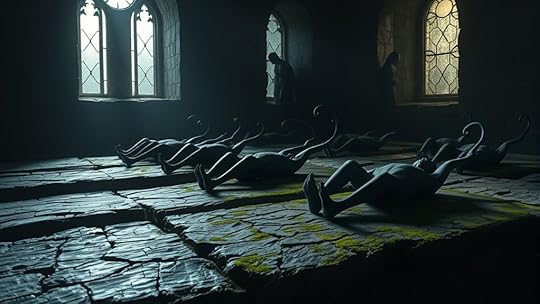
Throughout history, shadow entities have appeared in myths, folklore, and art, often representing fear, mystery, or the unknown. Ancient symbolism links these shadows to spiritual guides, spirits, or omens, reflecting humanity’s desire to interpret the unseen. Cultural rituals frequently incorporate shadow figures, such as shadow puppetry or nocturnal ceremonies, symbolizing passage, protection, or communication with spirits. These depictions serve as a bridge between the physical and spiritual worlds, emphasizing their significance across civilizations. You might notice how shadows symbolize both danger and guidance, depending on the context. Their persistent presence in cultural rituals highlights a deep-rooted fascination with the mysterious aspects of existence. These ancient representations remind us that shadow entities have long been woven into human understanding of the unseen worlds.
Biological Perspectives: Could Shadow Creatures Have Biological Rhythms?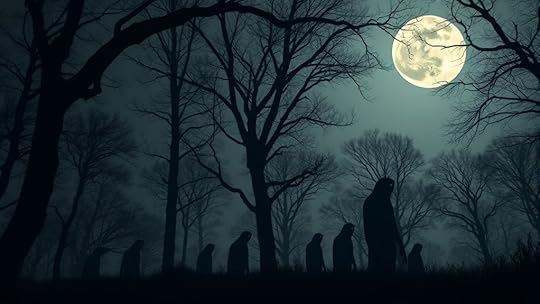
You might wonder if shadow creatures follow biological rhythms like other living beings. While myths often depict them as timeless, some scientists suggest they could have unique metabolisms that explain their sleep patterns. Exploring the difference between myth and biology helps us understand whether these entities could possess their own biological clocks.
Shadow Creature MetabolismWhile shadow creatures remain elusive in both myth and scientific inquiry, examining their potential biological rhythms opens intriguing possibilities. Their shadow metabolism might operate independently of typical circadian cues, aligning instead with nocturnal physiology suited to darkness. If these beings possess biological rhythms, they could regulate energy use, growth, and activity cycles uniquely adapted to their environment. Consider the following:
AspectPossible MechanismImplicationShadow MetabolismSlow, energy-efficient processesSustains activity during darknessNocturnal PhysiologyAdapted to low-light conditionsEnhances survival in shadowed domainsRhythmic PatternsIrregular or non-circadian cyclesChallenges traditional biological modelsBiological ClocksAlternative timing mechanismsCould operate on otherworldly cuesMyth vs. BiologyThe idea that shadow creatures might possess biological rhythms challenges traditional mythological views and invites scientific curiosity. If these beings follow biological patterns, it suggests they experience cycles similar to sleep and wakefulness, possibly linked to energy transfer processes. Dream analysis could reveal subconscious patterns, hinting at underlying biological functions. Their sleep might facilitate energy transfer between dimensions or domains, supporting the idea of a biological basis rather than purely supernatural origins. Such rhythms could regulate their activity patterns, aligning with environmental cues or internal clocks. Investigating these aspects bridges myth and biology, prompting questions about whether shadow creatures are more than myth—they might possess biological systems adapted to their unique existence. This perspective opens new avenues for understanding their mysterious sleep behaviors.
Observations and Anecdotal Reports of Sleep Patterns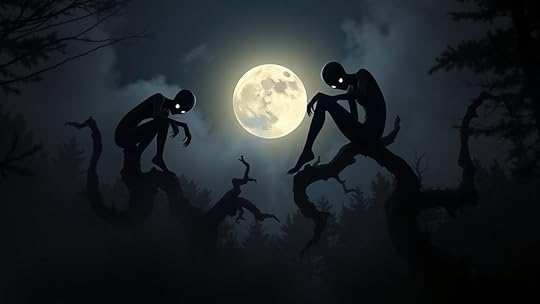
Many witnesses have reported intriguing patterns in the sleep behaviors of shadow creatures, often describing irregular and unpredictable rest cycles. Some observe brief, sporadic naps during midnight, while others see these entities vanish for days, only to reappear suddenly. These irregular patterns challenge typical circadian explanations and suggest ties to dream symbolism or psychic phenomena. You might notice that shadow creatures seem to enter a sleep state linked to specific lunar phases or emotional states, hinting at otherworldly influences.
Rest periods aligned with lunar cyclesSudden, unanticipated disappearances and reappearancesSleep states coinciding with heightened psychic activityDreams involving shadow entities often symbolic of hidden fears or desiresMythical Versus Scientific: Differentiating Fact From Folklore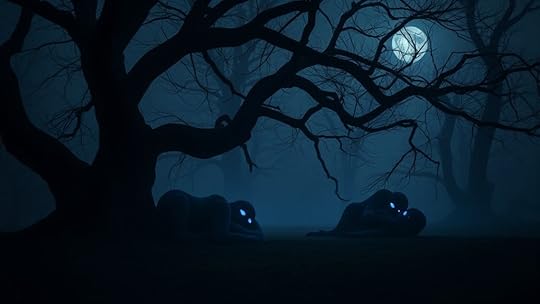
You might wonder how mythical sleep patterns compare to scientific understandings of circadian rhythms. While folklore often describes shadow creatures resting in ways that defy biology, science shows us consistent sleep cycles based on biology. Bridging these views helps us see where myth ends and fact begins.
Mythical Sleep PatternsAlthough shadow creatures have captivated folklore for centuries, their sleep patterns remain shrouded in myth and mystery. In mythological sleep, these beings are said to retreat into the shadow domain during their rest, often during unpredictable hours. Folklore suggests they sleep in ways that defy human circadian rhythms, with some stories claiming they sleep in short bursts or during specific lunar phases. To deepen your understanding, consider these mythological sleep traits:
Resting during moonless nights in the shadow domainSleeping in irregular, fragmented intervalsEntering a mythological sleep state that resembles dreamingAwakening suddenly, ready to re-enter their shadow domain dutiesThese tales blend myth and fantasy, making it hard to distinguish fact from folklore.
Scientific Circadian RhythmsWhile mythological accounts depict shadow creatures sleeping in fragmented or phase-specific patterns, scientific research reveals that all mammals, including humans, follow a consistent circadian rhythm governed by biological processes. This internal clock regulates sleep-wake cycles, ensuring restorative sleep and alertness during the day. Dream analysis shows that REM sleep, which occurs predictably each night, plays a key role in memory and emotional processing. Sleep deprivation disrupts this cycle, impairing cognitive function and emotional stability. Unlike folklore, which suggests irregular or mysterious sleep behaviors, scientific evidence confirms a precise, genetically encoded rhythm. Understanding these biological processes helps differentiate fact from myth, illustrating that shadow creatures’ sleep patterns, if they exist biologically, are likely governed by the same circadian principles as any other mammal.
Bridging Folklore and ScienceBridging folklore and science requires carefully examining the differences between myth and empirical evidence. Folklore often describes phantom whispers or spectral resonance, which evoke mysterious energies beyond scientific understanding. To differentiate fact from folklore, consider these points:
Source of Evidence: Scientific claims rely on measurable data, while folklore depends on stories and traditions.Reproducibility: Scientific phenomena are reproducible; spectral resonance varies with context.Causality: Science seeks cause-and-effect explanations, unlike mythological interpretations of phantom whispers.Objective Verification: Empirical methods verify claims; folklore relies on subjective experience.Understanding these distinctions helps you appreciate how shadow creatures’ sleep schedules might blend spectral resonance with biological rhythms, bridging the gap between myth and science.
Possible Environmental Influences on Shadow Creatures’ Activity Cycles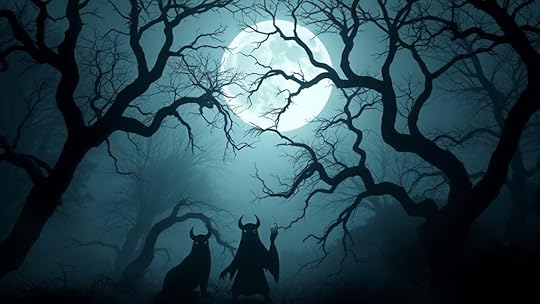
Environmental factors such as light, temperature, and humidity appear to markedly influence the activity cycles of shadow creatures. You may notice increased activity during certain moon phases, especially new or full moons, when environmental shadows grow more pronounced. These shadows could serve as triggers, aligning shadow creatures’ movements with external cues. Temperature fluctuations also seem to affect their behavior, with cooler nights often correlating with higher activity. Humidity levels may further modulate their movement, making environments more or less hospitable. To illustrate, consider the following:
Environmental FactorEffect on Shadow CreaturesMoon PhasesIncreased activity during specific phases, linked to shadowsEnvironmental ShadowsAmplify or diminish creature visibility and movementTemperatureCooler temperatures elevate activity levelsHumidityHigher humidity may facilitate or hinder movementHypotheses on Otherworldly or Dimensional Sleep Cycles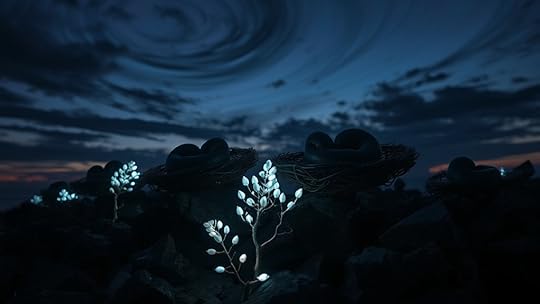
Theories suggest that shadow creatures may follow sleep cycles rooted in otherworldly or dimensional rhythms rather than Earth’s day-night pattern. This idea proposes that their spectral rest aligns with a different wavelength of existence, making their sleep cycles hard to predict. You might consider these possibilities:
Dimensional sleep, where shadow beings rest during phases of dimensional overlap.Spectral rest, occurring at times when their energy is most receptive to interdimensional influences.Cycles synchronized with celestial or cosmic events outside our understanding.Sleep patterns driven by internal, otherworldly clocks independent of terrestrial time.These hypotheses suggest shadow creatures aren’t bound by our circadian rhythm but instead follow an alien or interdimensional schedule that influences their activity and rest.
Technological Investigations and Challenges in Studying Shadow Beings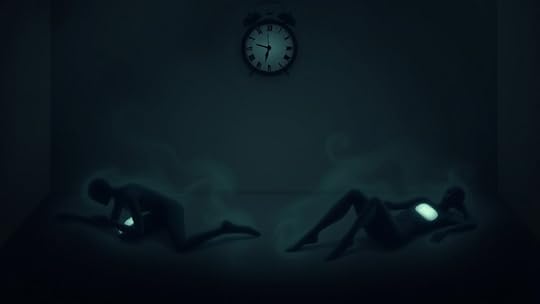
Studying shadow beings presents unique technological challenges because their elusive nature defies conventional detection methods. Standard imaging tools often fail to capture their presence, requiring advanced techniques like neural imaging to monitor subtle neural activity potentially linked to these entities. Quantum entanglement offers a promising avenue, enabling researchers to explore connections beyond observable dimensions. However, these methods face hurdles such as signal interference and interpretational ambiguity. To illustrate, here’s a comparison of current tools:
TechniqueStrengthsLimitationsNeural ImagingDetects neural activityLimited spatial resolutionQuantum EntanglementExplores non-local connectionsExperimental, interpretive challengesInfrared CamerasDetects heat signaturesIneffective in absence of heatSpectral AnalysisAnalyzes energy signaturesDifficult to isolate shadow signalsThese challenges push researchers to innovate continuously.
Implications of Non-Human Sleep Rhythms for Understanding Consciousness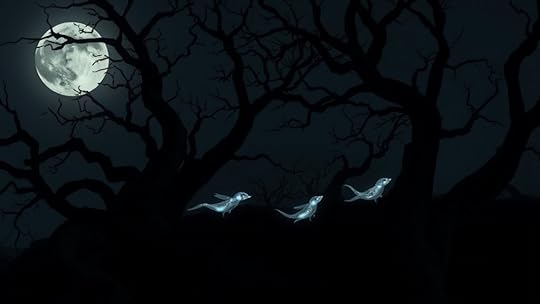
Non-human sleep rhythms challenge our understanding of consciousness by revealing alternative states of awareness beyond human patterns. These rhythms suggest that consciousness might not be confined to traditional sleep-wake cycles. For example, shadow creatures’ unpredictable sleep schedules could indicate different neural processes. Consider:
How dream analysis could uncover unique subconscious experiences during their sleep.The effects of sleep deprivation on their cognitive and perceptual functions.Whether their altered sleep patterns allow access to other domains of awareness.How non-human rhythms expand our view of consciousness’s flexibility.Future Directions in the Study of Shadow Creatures’ Behavioral Patterns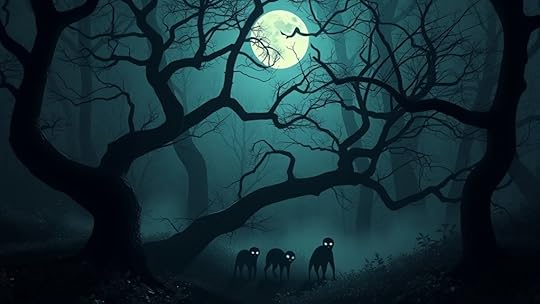
As researchers explore deeper into the behavioral patterns of shadow creatures, new avenues emerge for exploring their mysterious routines. Future studies may focus on how quantum entanglement influences their sleep or activity cycles, potentially linking their behavior across vast distances or dimensions. Investigating dimensional oscillations could reveal how shadow creatures shift between realms or states of consciousness, shedding light on their sleep-like periods. Advanced imaging and measurement techniques might uncover hidden patterns tied to these quantum phenomena, offering insights into their non-human rhythms. By integrating quantum physics and dimensional theories, you can better understand whether their behaviors are truly circadian or driven by otherworldly forces. These directions promise to *uncover* deeper knowledge about their nature and the fundamental mechanics of their existence.
Frequently Asked QuestionsDo Shadow Creatures Exhibit Any Signs of Sleep Deprivation?You might wonder if shadow creature mythology shows signs of sleep deprivation. While their mysterious nature leaves much to speculation, some reports suggest they exhibit sleep deprivation symptoms like lethargy, disorientation, or erratic behavior. These signs could imply they need rest or are affected by their own shadowy existence. However, since they are mythological, it’s difficult to confirm whether their sleep patterns follow biological needs or are otherworldly phenomena.
Can Shadow Entities Be Awake During Daylight Hours?You might wonder if shadow entities can be awake during daylight activity. While most shadow entity sleep patterns are linked to darkness, some reports suggest they’re active in daylight hours too. They seem to defy typical sleep cycles, possibly driven by otherworldly influences rather than circadian rhythms. So, yes, shadow entities can be awake during daylight hours, challenging our understanding of their sleep and activity schedules.
Are There Any Known Physiological Markers for Shadow Creature Sleep?You’re curious if shadow creatures exhibit physiological markers for sleep. While we lack concrete evidence, some suggest their shadow energy patterns might reveal spectral sleep indicators, such as fluctuating energy levels or specific aura changes. These markers could help identify when they rest, even if their sleep differs from ours. Ongoing research might uncover more about their unique sleep states, but current knowledge remains limited and speculative.
How Do Shadow Beings Respond to Environmental Changes Affecting Sleep?You observe that shadow beings respond to environmental changes in ways that influence their sleep, much like how dream symbolism reflects inner fears or desires. In shadow mythology, these entities adapt their sleep patterns based on surroundings, indicating a connection to unseen energies. You notice shifts in their behavior when twilight or darkness alters, suggesting they may be sensitive to light or energy fluctuations, revealing deeper links between their sleep and the mysterious, symbolic domain they inhabit.
Could Shadow Creatures’ Sleep Cycles Be Influenced by Human Activity?You might wonder if human activity influences shadow creatures’ sleep cycles. It’s possible that their phantom insomnia and nocturnal behavior are affected by our movements and vibrations. When you’re active at night, you could unknowingly disrupt their rest, making them more restless or active. Their sleep patterns may be linked to environmental cues, but whether they respond directly to human activity remains a fascinating mystery.
ConclusionAs you ponder their elusive slumber, remember that shadow creatures dance on the edges of our understanding, their sleep whispers blending with the shadows themselves. Whether bound by earthly rhythms or drifting through unseen dimensions, their resting moments hint at mysteries beyond our reach. Embrace the quiet allure of the unknown, where darkness cradles secrets waiting to be gently uncovered, like midnight’s soft breath upon the world’s hidden corners.



